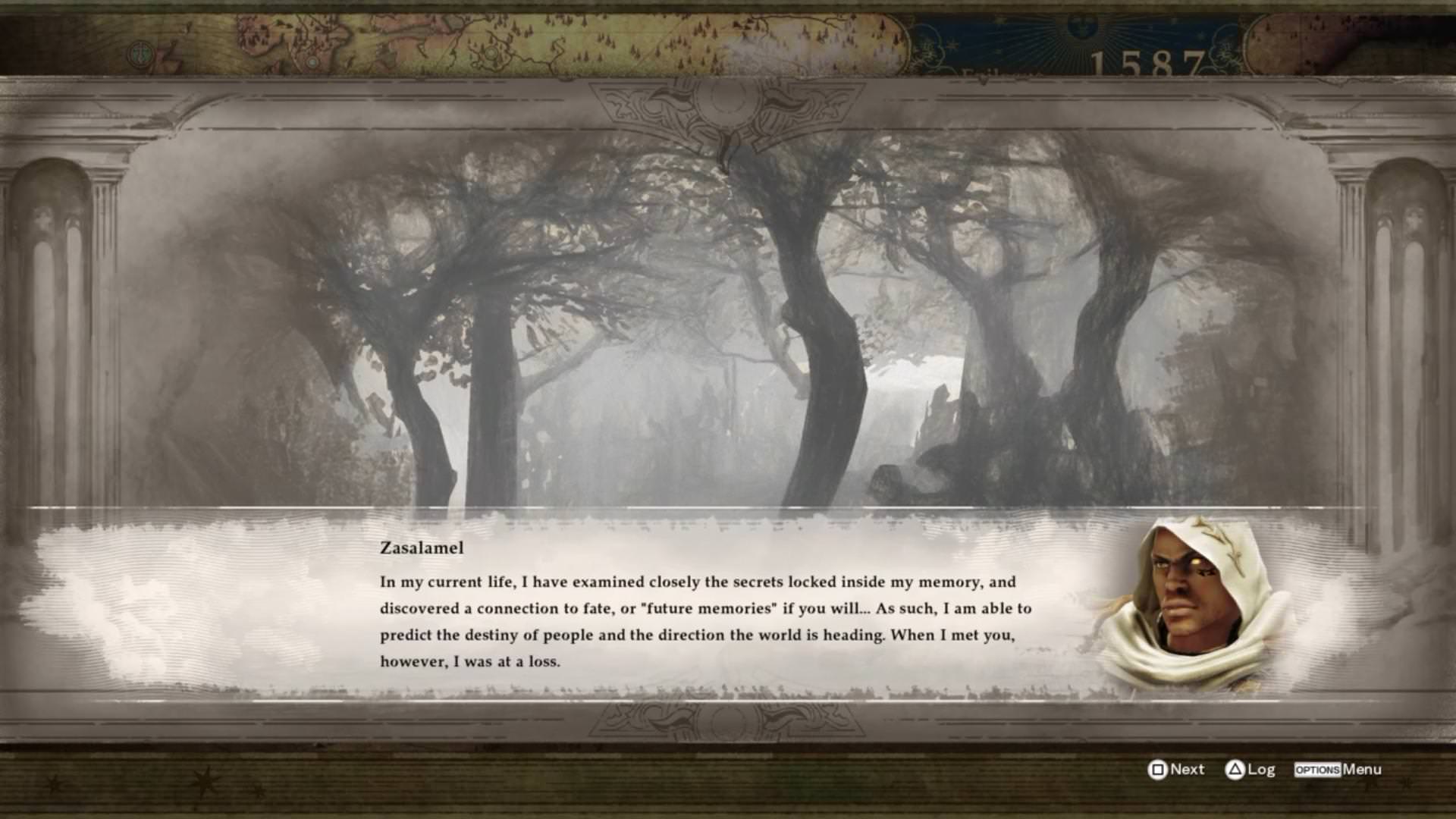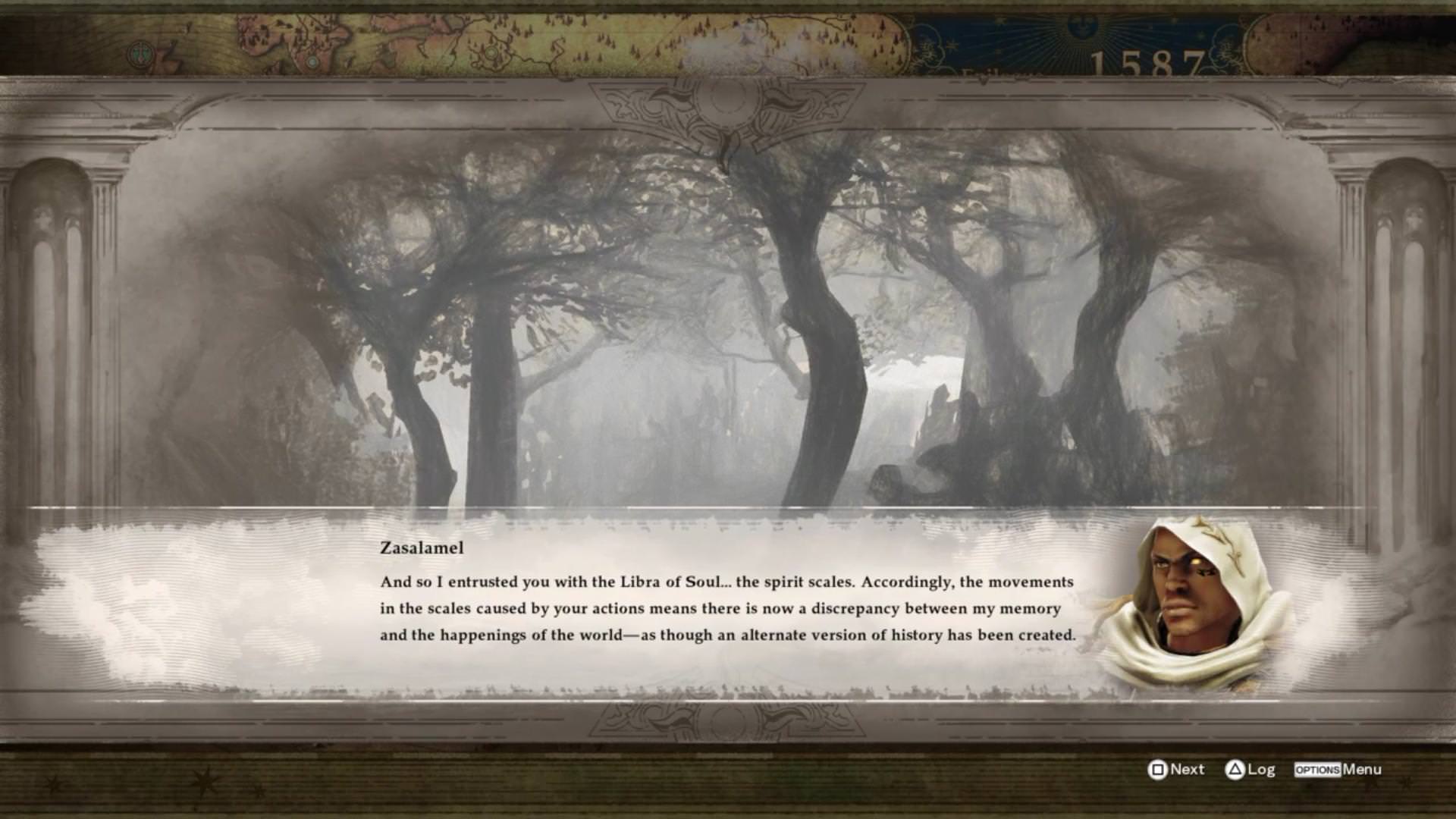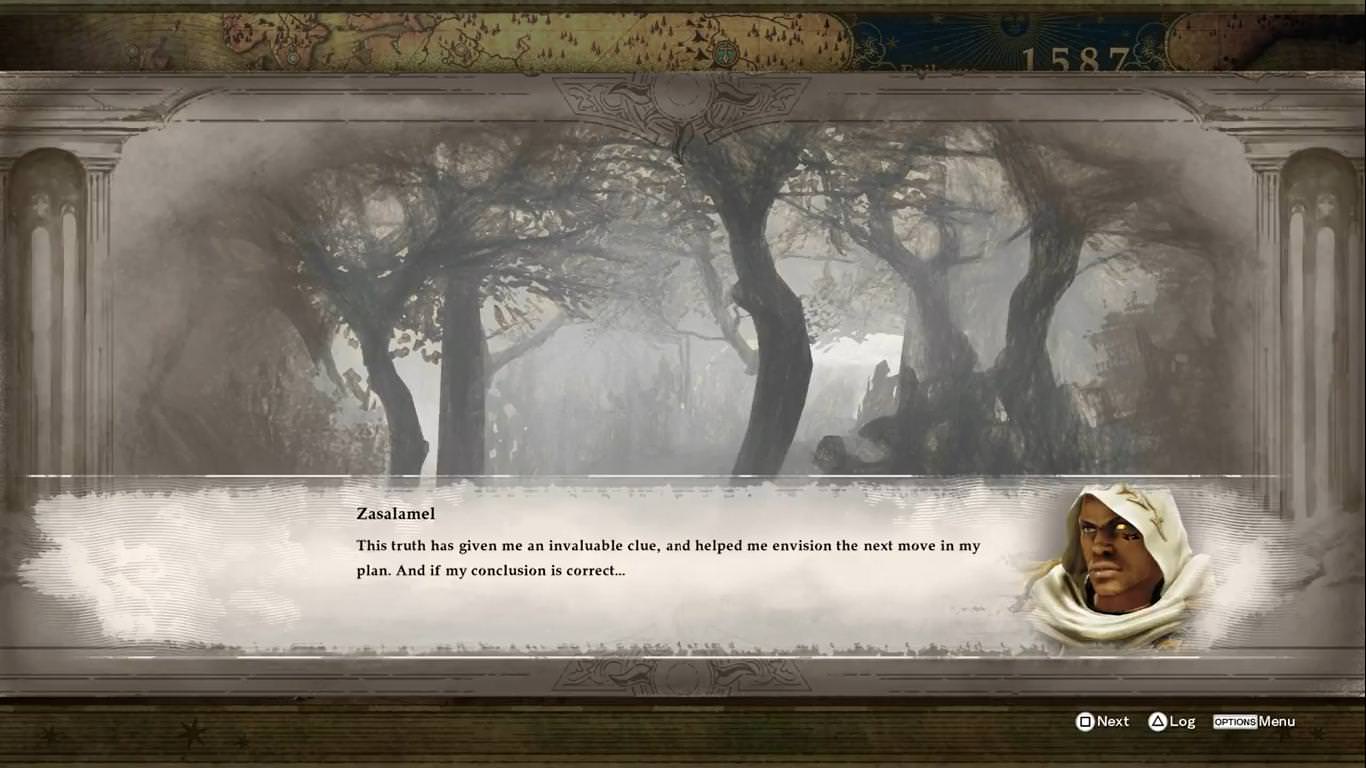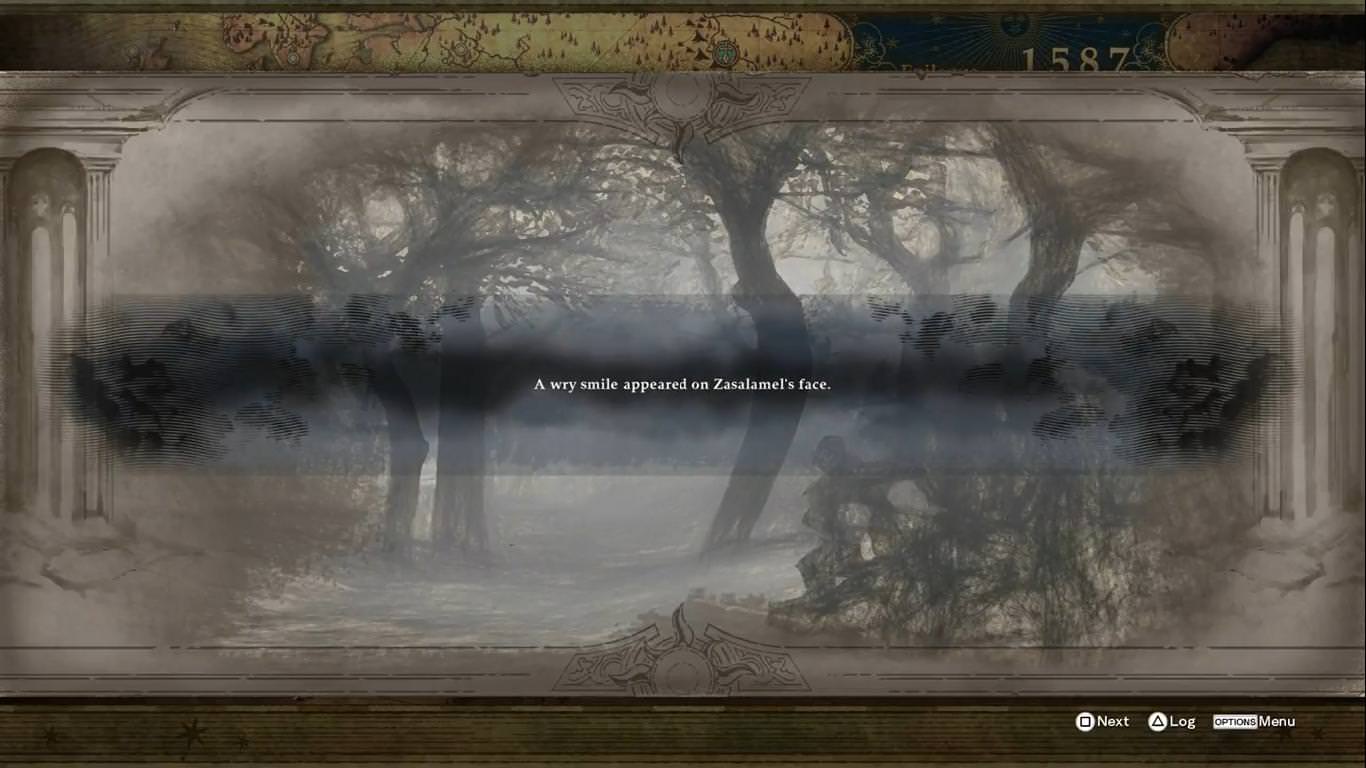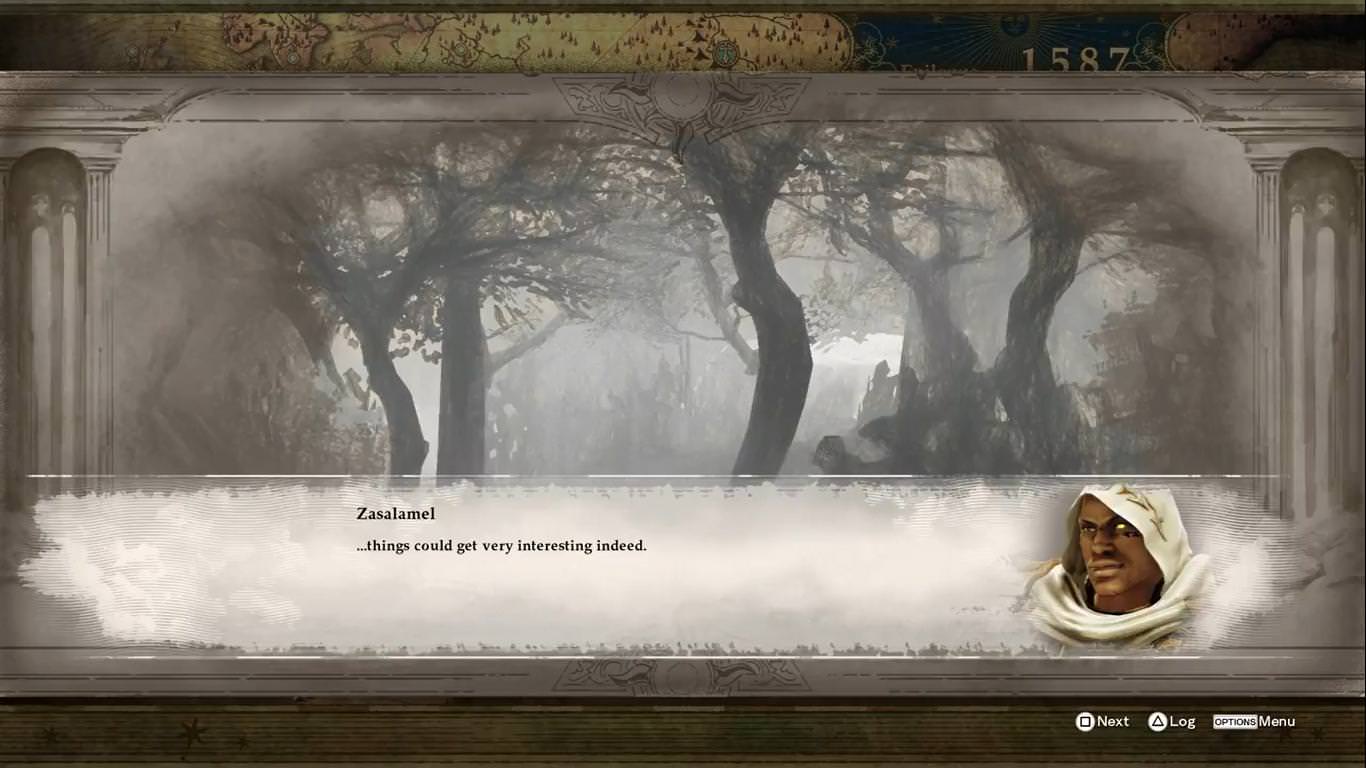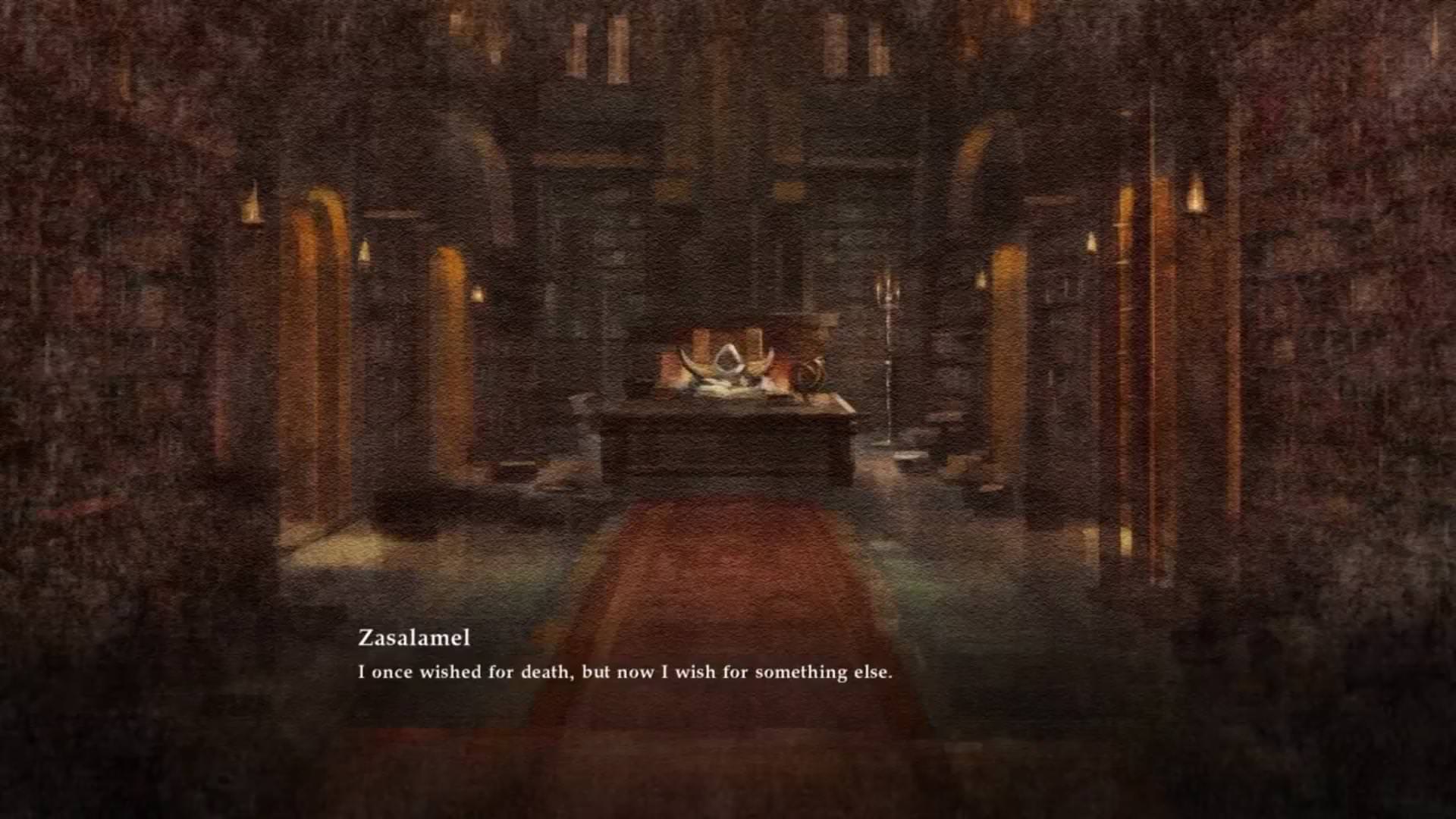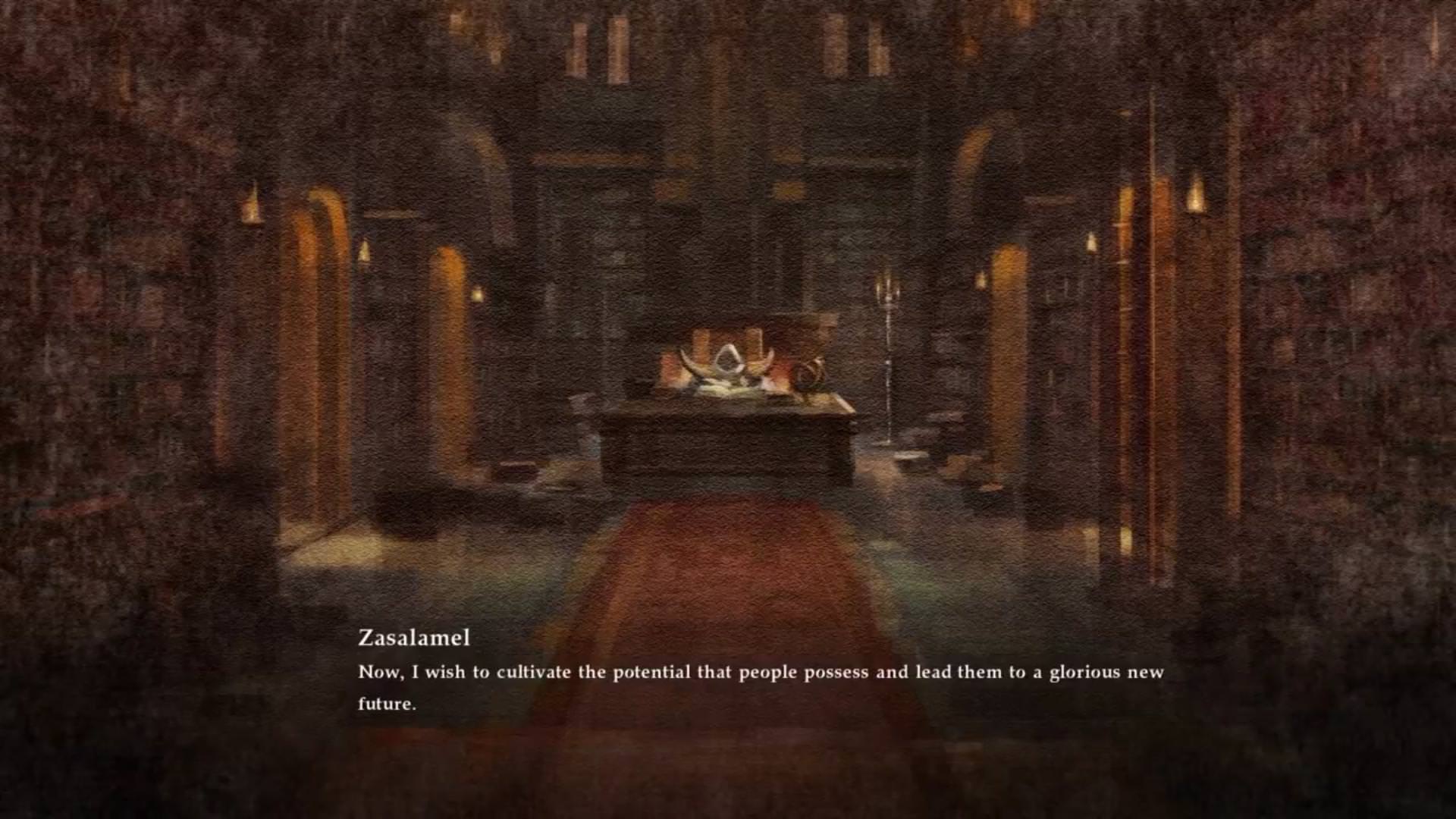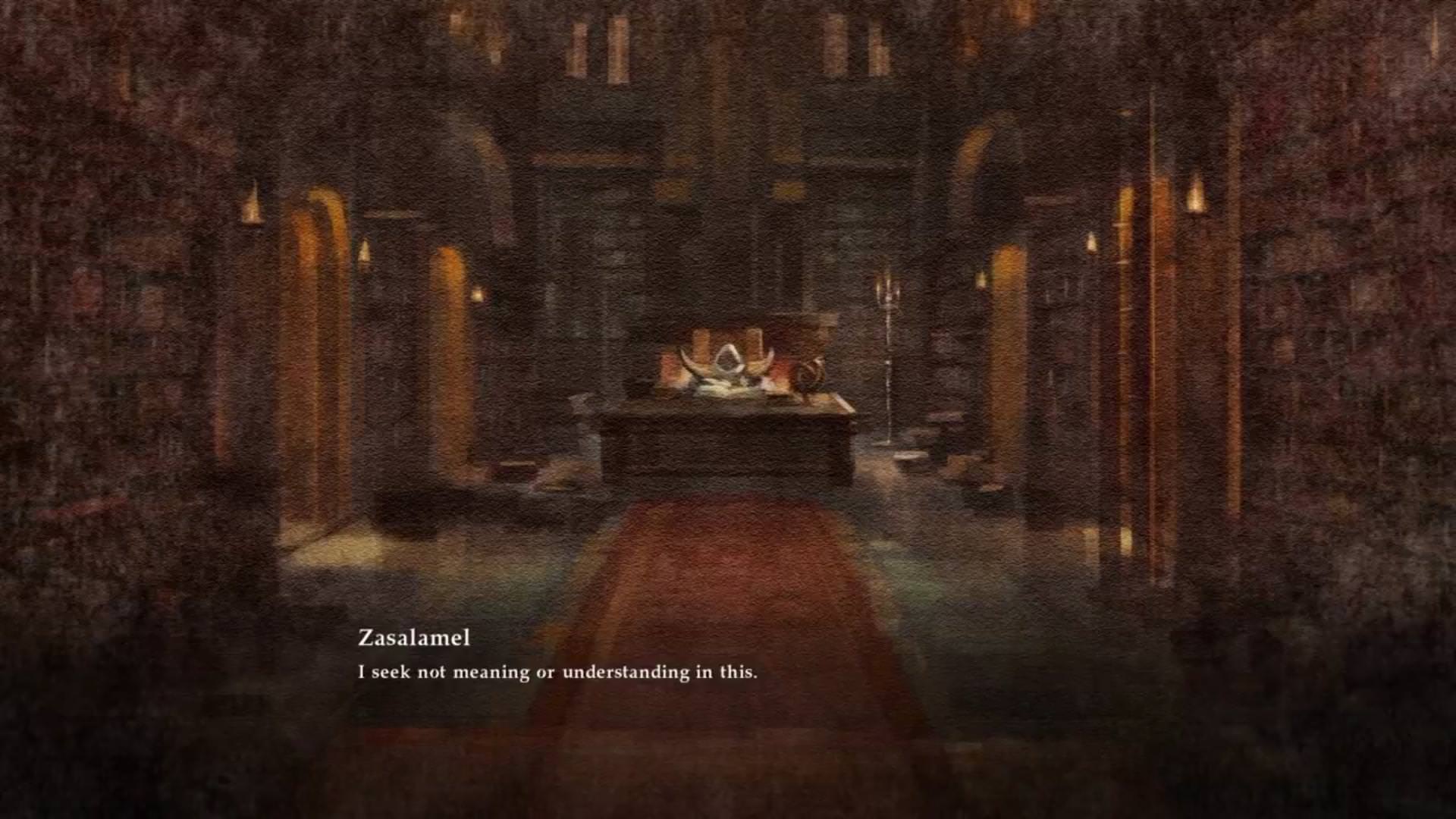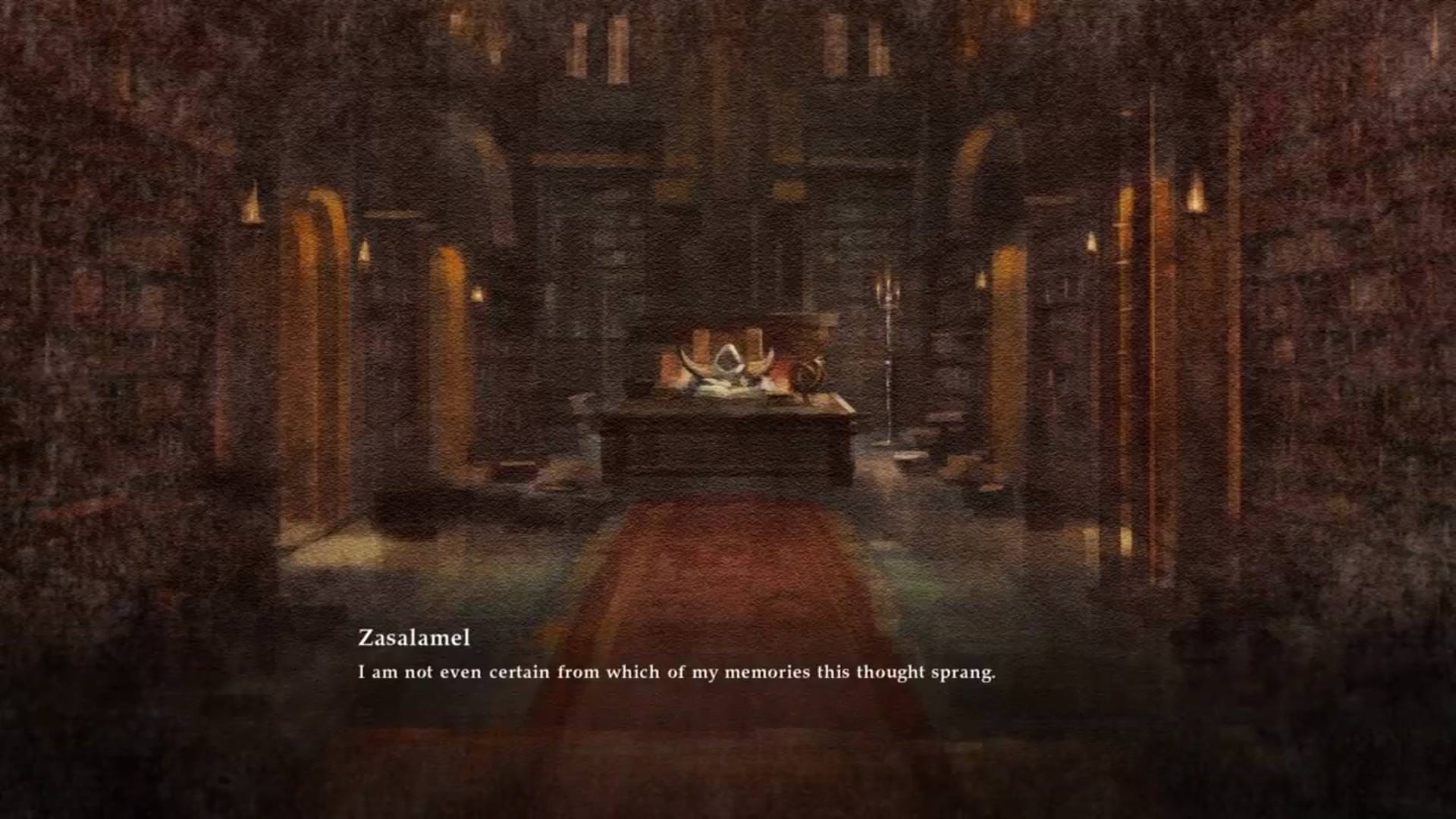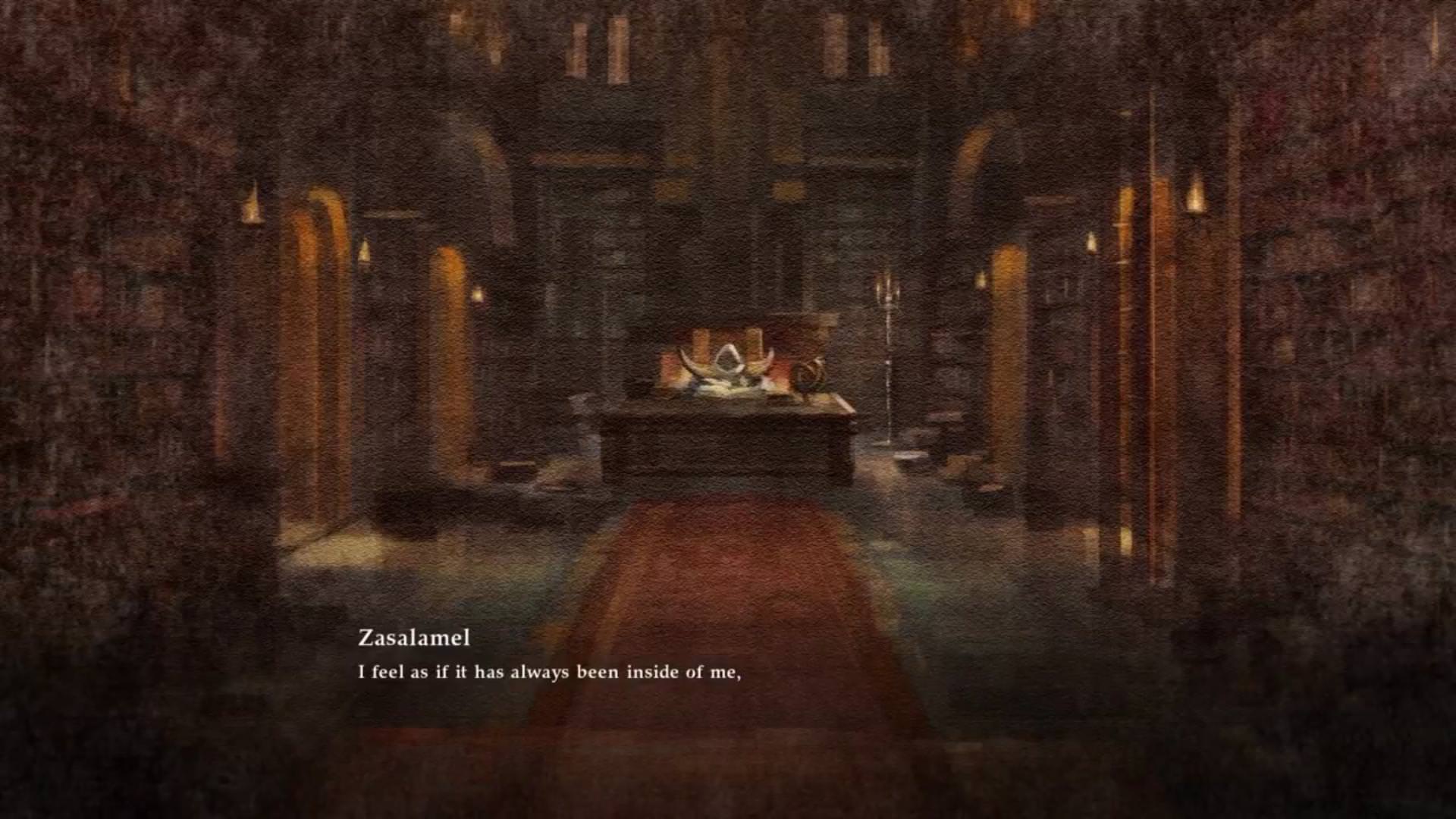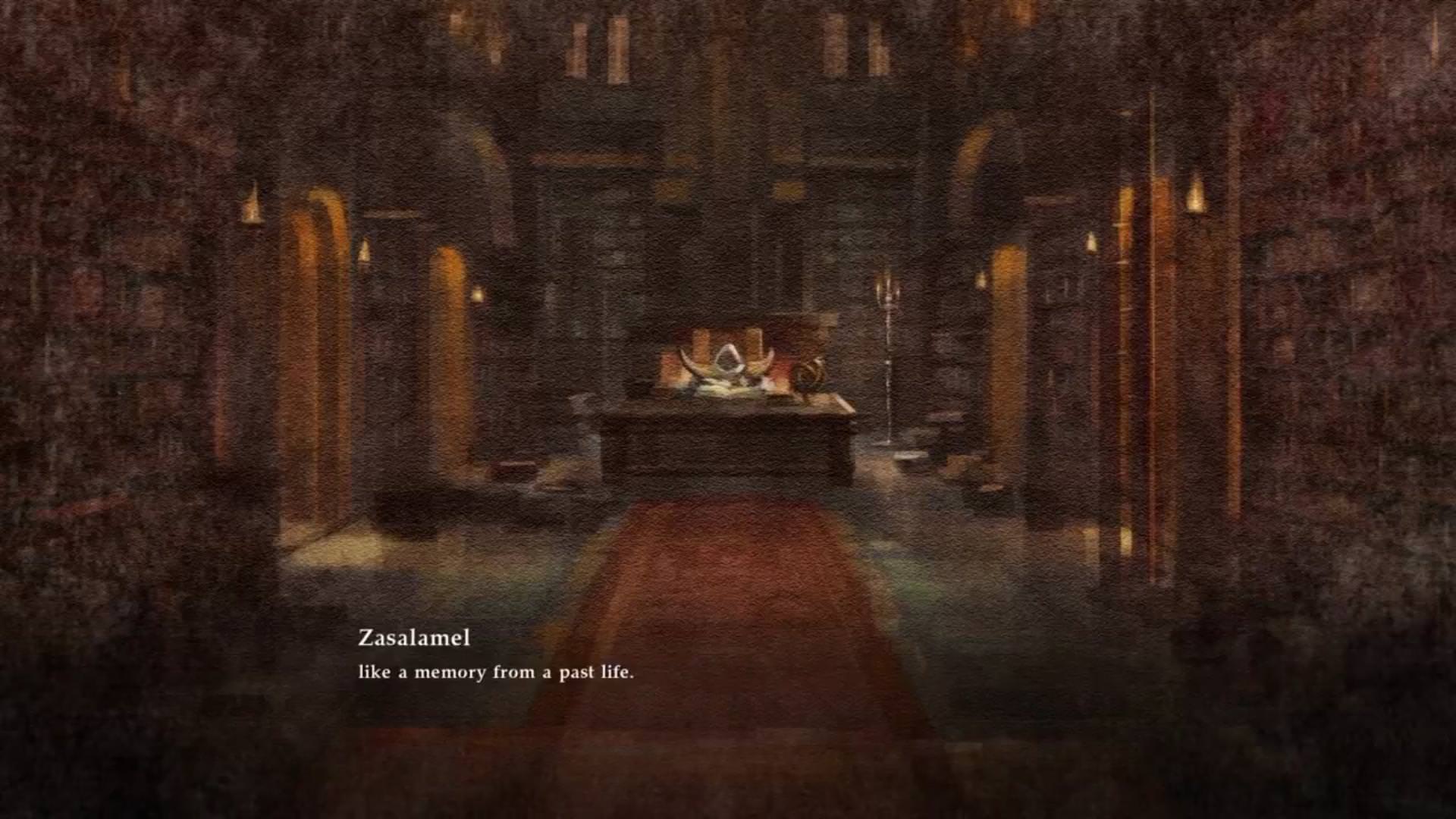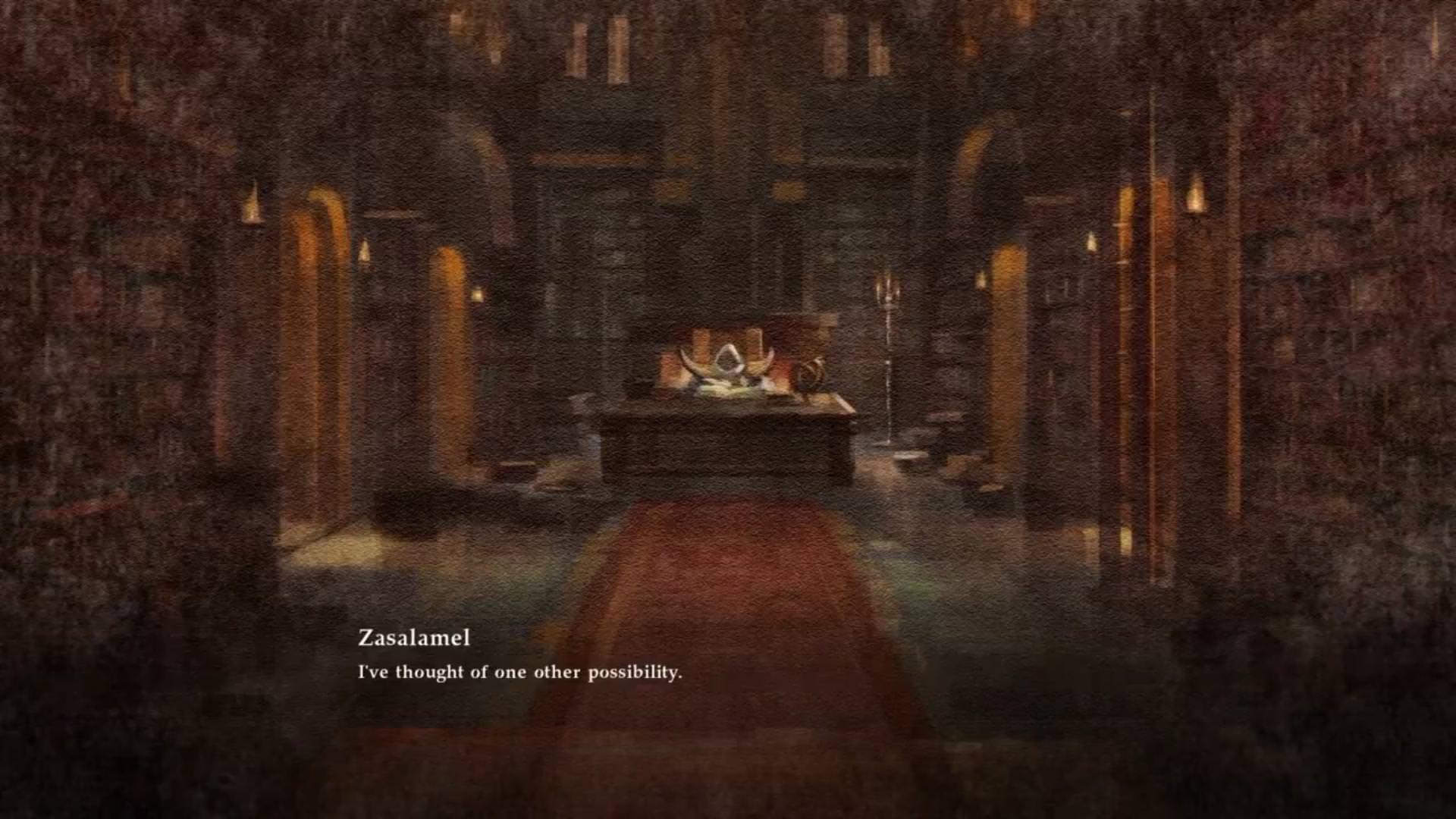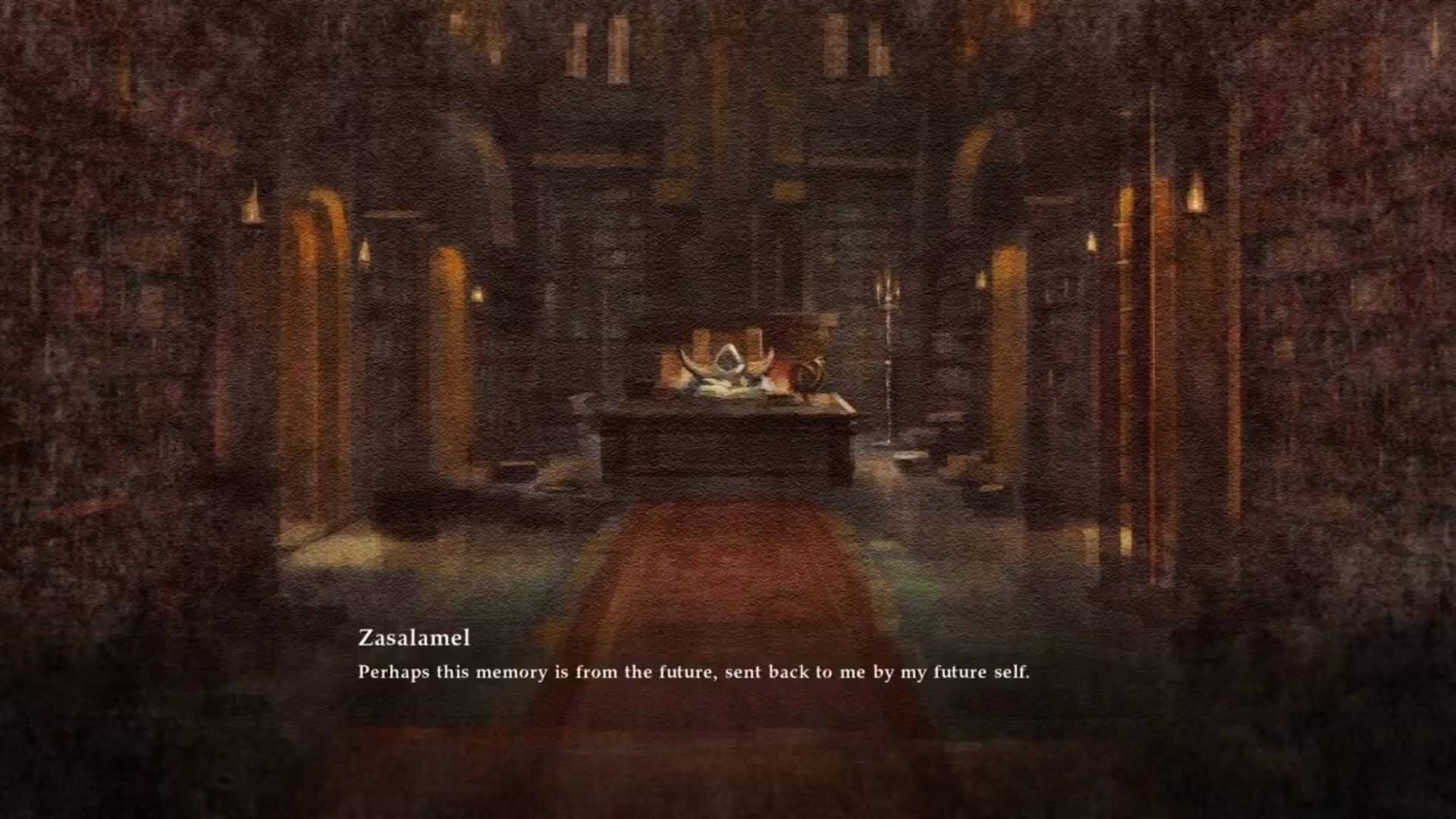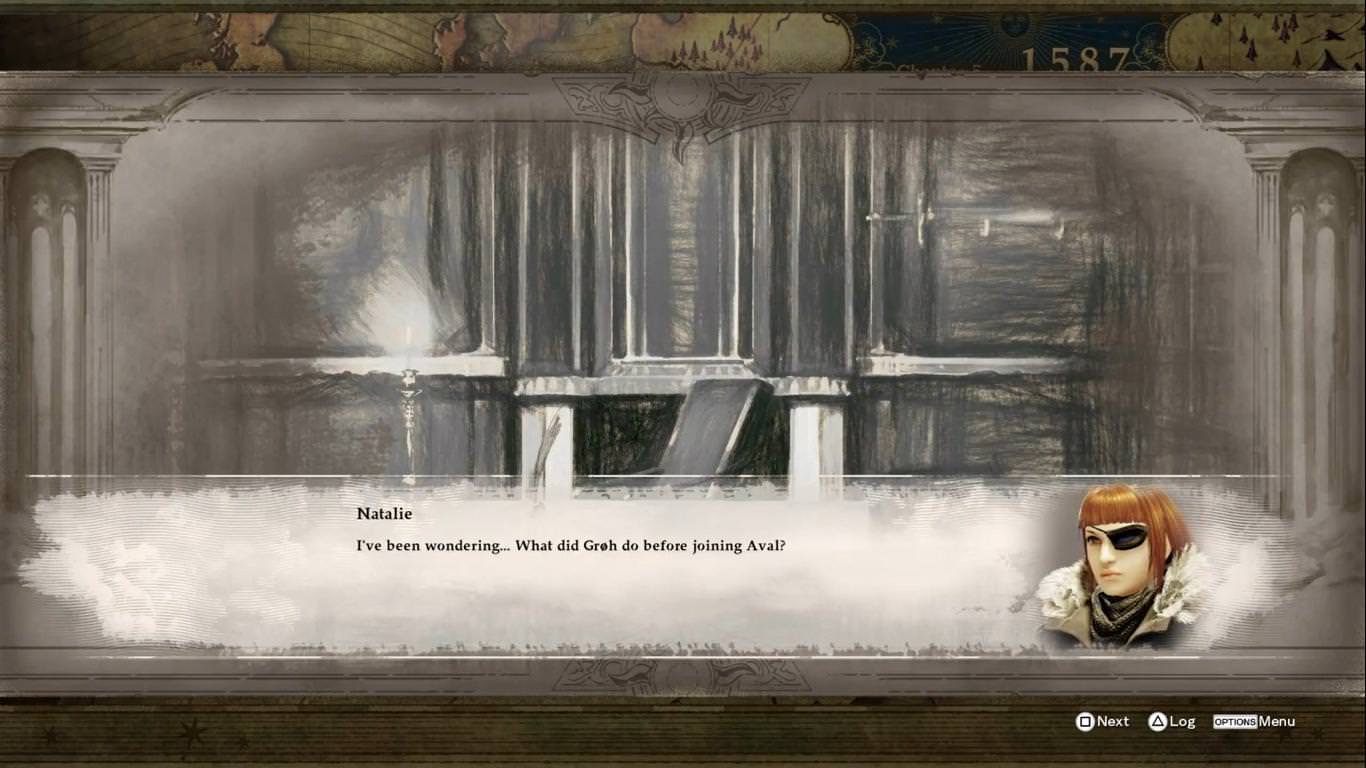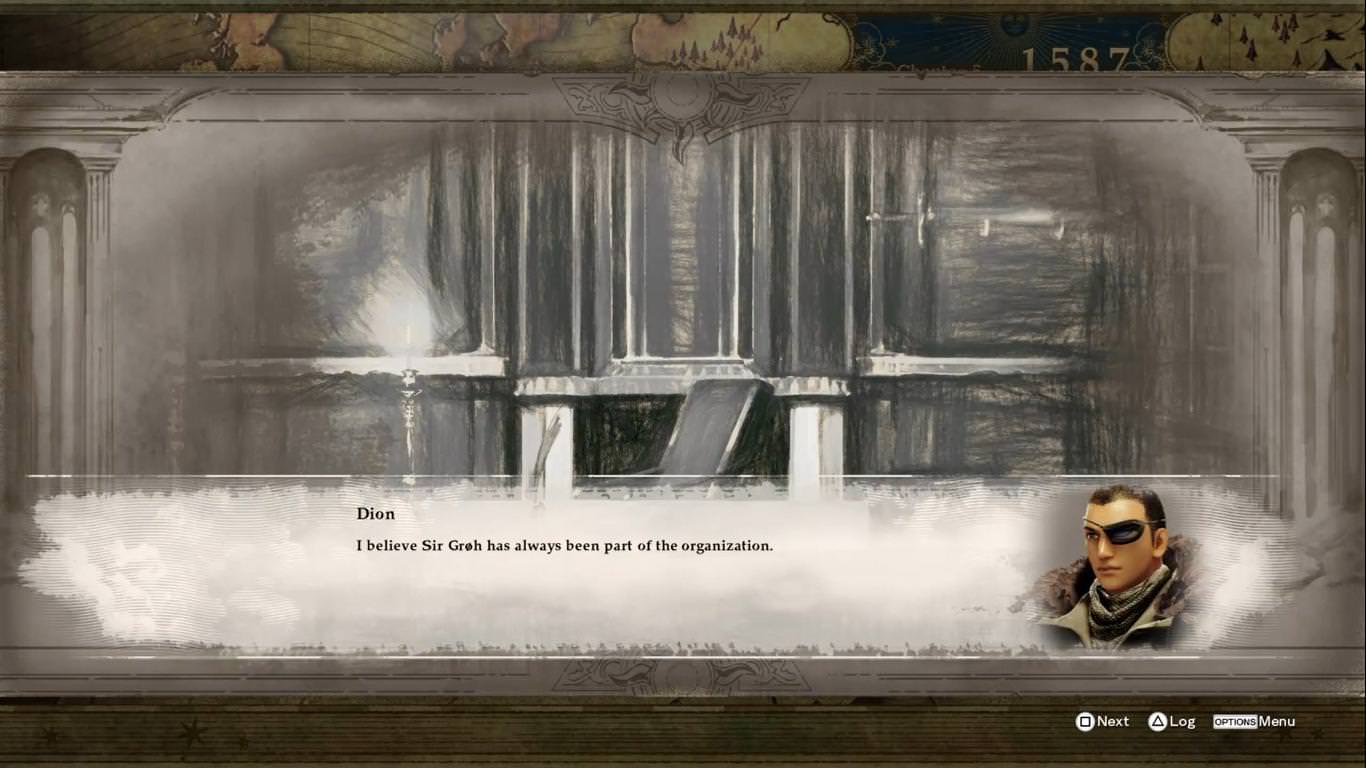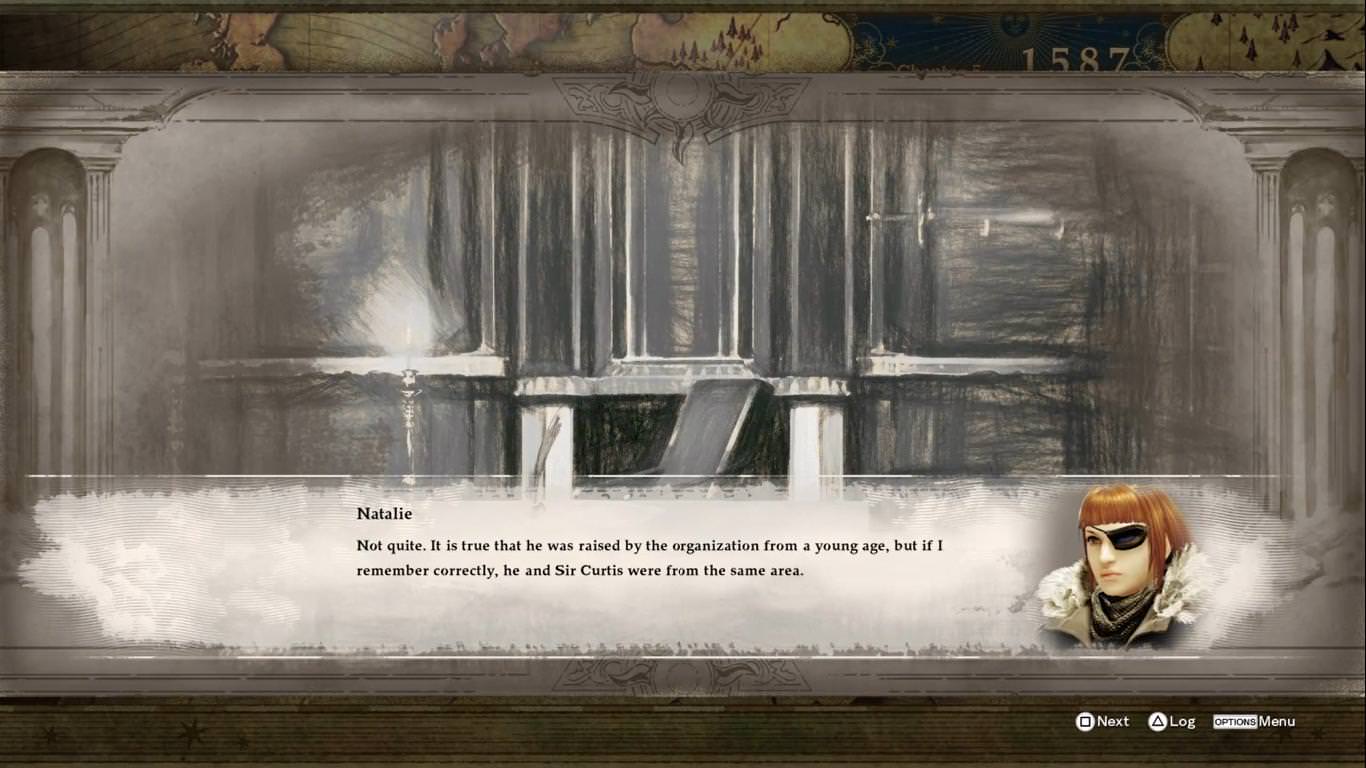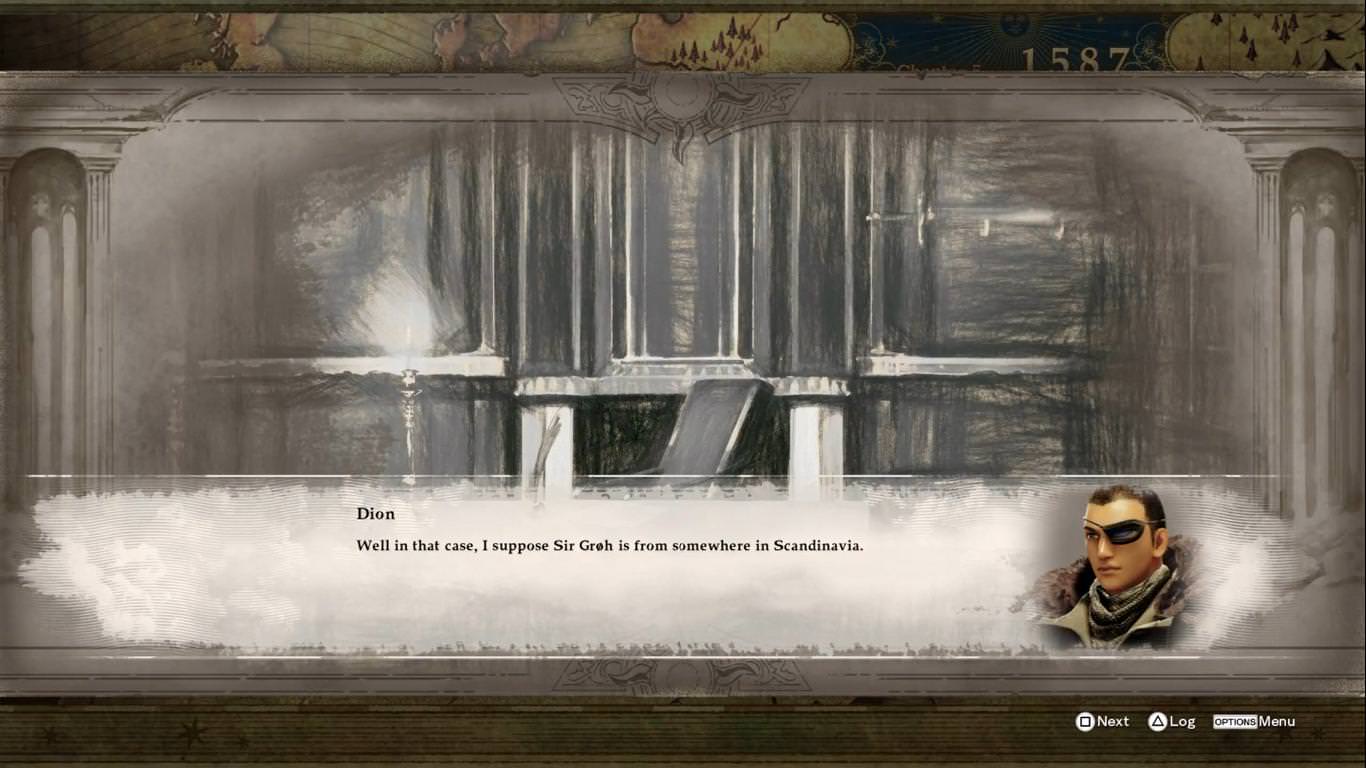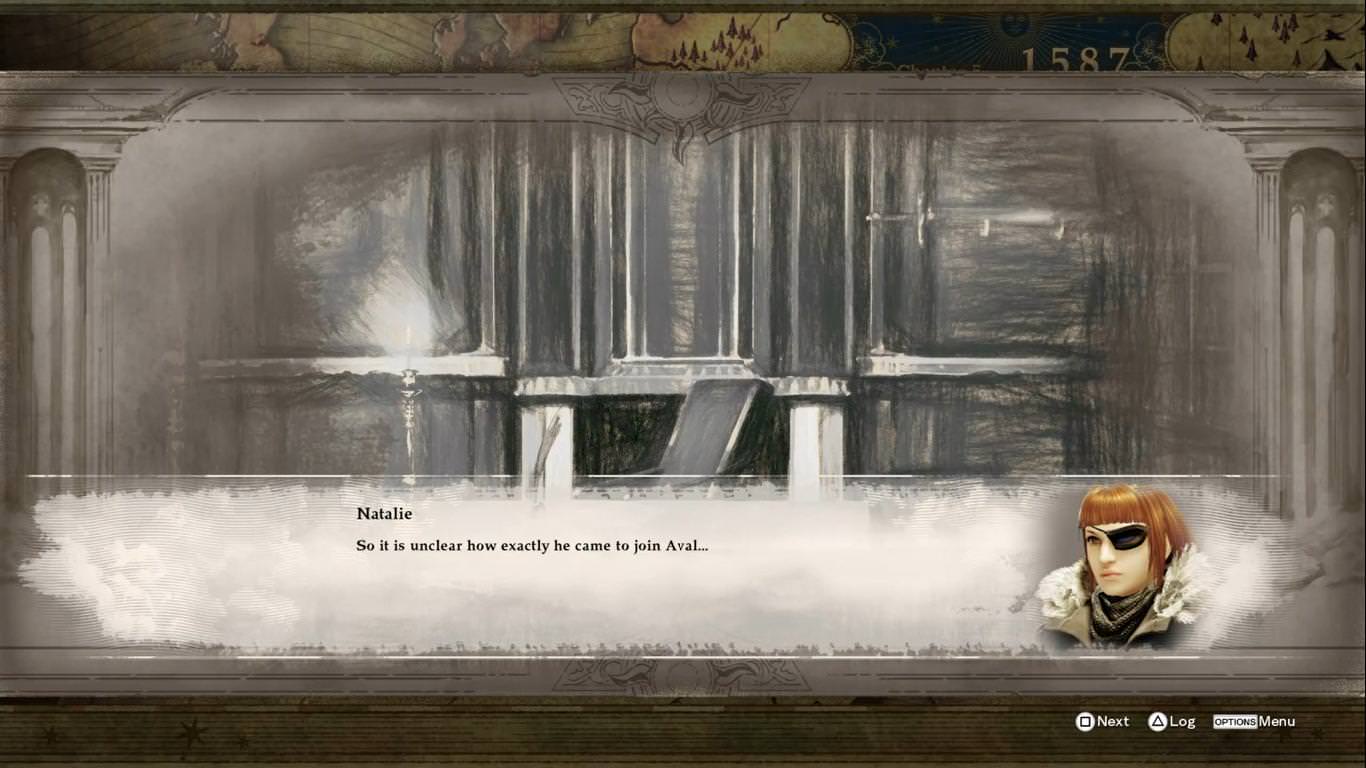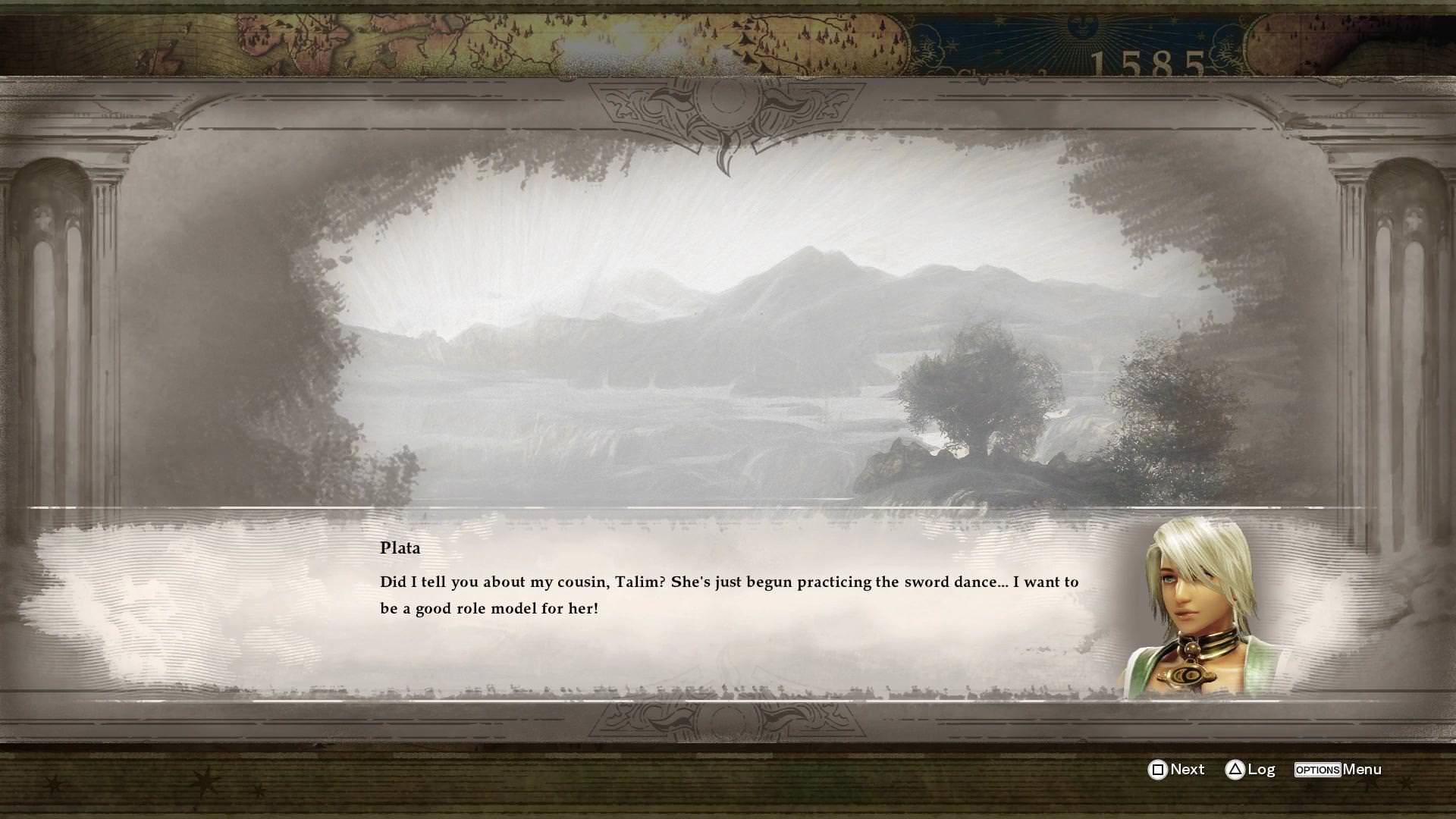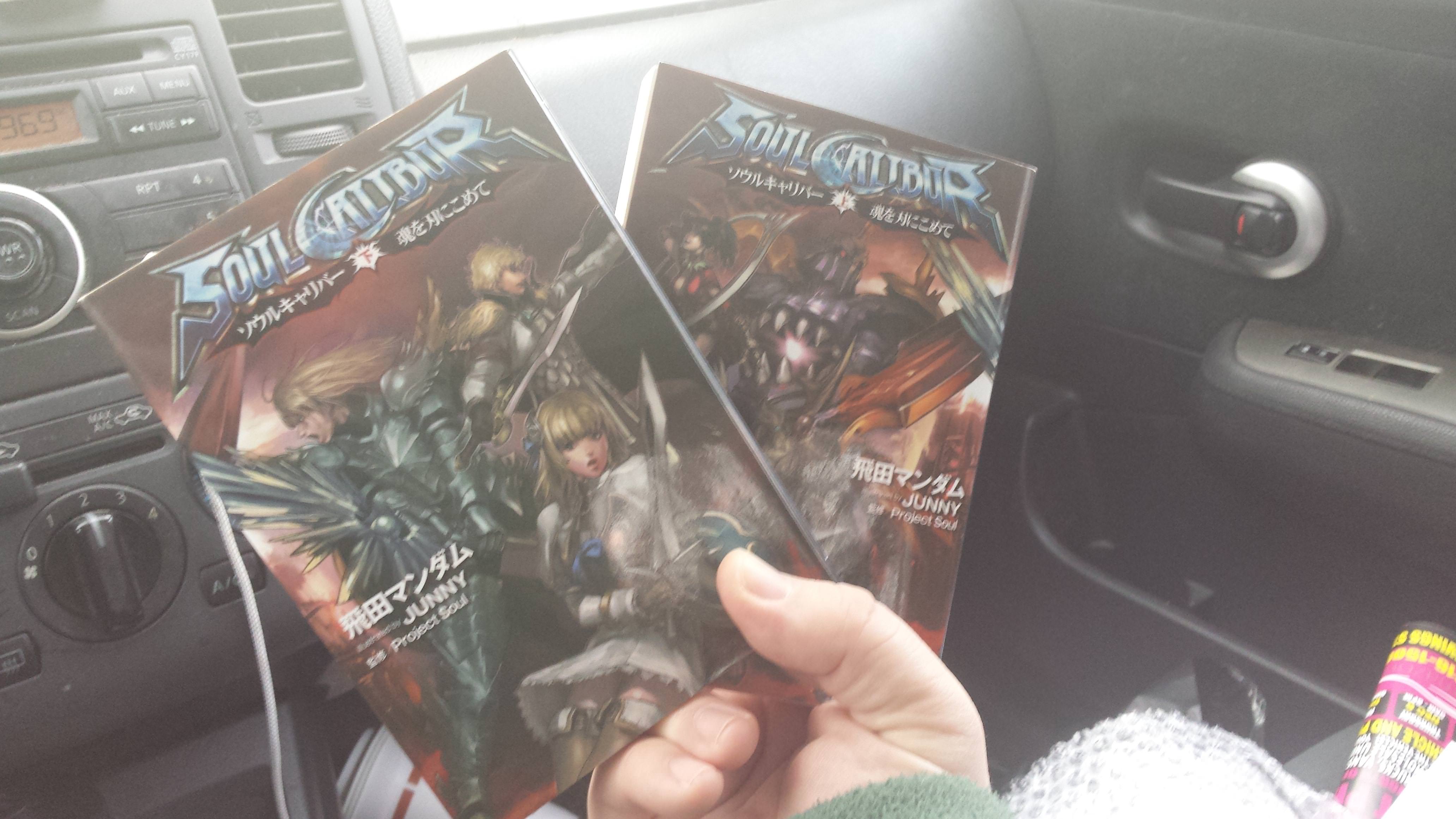Nyte has frequently made the point that if SCV weren't seen as a landfill fire that should be avoided, SCVI wouldn't be an expanded remake of a beloved earlier entry in the series. I do think there is merit to this observation, as well as the sentiment that Patroklos is one of the least sympathetic video game protagonists of all time. That said, there is also merit to the observation that SCVI has already incorporated a notable number of significant lore details previously exclusive to the flagging period of the series -- i.e. SCIV and SCV.
I include SCIV as part and parcel with SCV and the series' past decline for three reasons:
----
— They share a consistent (almost universally poorly received, as near as I can tell) in-game aesthetic due to
Daishi Odashima being the designer in charge of the in-game character designs for SCIV, then being the overall project director on SCV
— SCIV featured such a barebones and disjointed story mode that SCV's notoriously incomplete "Story -1607 A.D.-" was actually a marked improvement. This was especially inexcusable from SCIV after the fairly meaty "Tales of Souls" mode -- and general wide breadth of content -- featured in SCIII. (When no one at GameFAQs even bothers to transcribe the in-game character profiles from an SC game into an FAQ because they were literally just a copy-paste job of the opening blurb from each character's emaciated story mode, that kind of says it all)
— The story premise for SCIV had everyone in the same small location right from the start rather than initially wandering the world. This resulted in a frantic "imminent showdown" atmosphere that essentially demanded any follow-up game address the narrative climax established by SCIV's premise. Compound this with the bafflingly barebones story content of the game (all the more baffling in light of the aforementioned narrative climax), and it is this development, I would wager, that led to the consideration of the infamous time skip being incorporated into SCV
----
With this parent-child relationship between SCIV and V in mind, I ask that we now turn our attention to the multiple aspects of series lore from these two games and their affiliated official materials (e.g. the "New Legends of Project Soul" book) that we find incorporated into SCVI's story:
----
— The Guardians of the Spirit Sword that Zasalamel was once part of are mentioned in his Soul Chronicle; the order's name was previously established as part of SCV's lore on
pg. 11 and
pg. 107 of the "New Legends of Project Soul" book
— King Arthur ("... a king from medieval Europe ... Born in Britain") is referenced in Zasalamel's Soul Chronicle as a previous wielder of Soul Calibur; as with the previous entry on this list, this information was previously established as part of SCV's lore on
pg. 11 of the "New Legends of Project Soul" book
— Soldiers of the Wolfkrone Kingdom from which Hilde hails feature in Nightmare's Soul Chronicle while Queen Hildegard herself is referenced by name in the "Libra of Soul" story segment, "Taking On the World: The Merchant's Tale" (I'd be thoroughly surprised if she isn't also mentioned by name in the "Wolfkrone Kingdom" entry of the Encyclopedia in the Library section of the Museum as well); Hilde and her kingdom, of course, feature prominently in SCIV's story
— Zasalamel identifies the Hero King Algol by name and title in the "Echoes of Fate: Spirit Scales" story segment during the Epilogue chapter to "Libra of Soul," and also mentions that Algol's soul lay trapped in the Astral Chaos awaiting the opportunity to be freed; this eventuality is, of course, the inciting incident of the narrative climax that is the premise of SCIV; in addition, Zasalamel's Story Chronicle goes into Algol's tragic history and role in the creation of Soul Calibur, these details previously hailing from SCIV
— Siegfried's Soul Chronicle demonstrates that Soul Calibur, like Soul Edge, also possesses sentience while Zasalamel's Soul Chronicle and the Epilogue chapter to "Libra of Soul" have the immortal scribe acknowledge that the spirit sword has the same (i.e. evil) properties as Soul Edge since it was forged from a fragment of the evil weapon (e.g. Zasalamel: "In truth, the spirit sword that Algol forged is simply a part of the cursed sword, and so possesses the same properties"); these aspects of Soul Calibur (sentience and a similar nature to Soul Edge) were previously revealed in SCIV and heavily featured in SCV
— Raphael's Soul Chronicle reveals that the mansion he "acquired under dark pretenses" (per his in-game profile from SCII) had belonged to Lord Dumas; this man's name is the identity Nightmare would adopt in SCV after taking possession of Raphael's body
----
All this in mind, the fundamental lore of the later installments of the SC series is very much in play in the setting of SCVI. They were not excised. The vast majority of what we see happen in SCVI most likely also occurred in the original timeline.
All that being said, SCVI does seem to imply that history will be taking a different course than before, even if it has not yet obviously done so, only beginning to diverge after a single reclusive character begins to make their move in 1590.
I'm referring here to some of Zasalamel's statements from the "Echoes of Fate: Spirit Scales" story segment during the Epilogue chapter to "Libra of Soul," as well as his revelations about the future from his hidden eighth Soul Chronicle chapter.
Let us look first at these statements found in "Libra of Soul":
----
"In my current life, I have examined closely the secrets locked inside my memory, and discovered a connection to fate, or 'future memories' if you will... As such, I am able to predict the destiny of people and the direction the world is heading. When I met you, however, I was at a loss."
"And so I entrusted you with the Libra of Soul... the spirit scales. Accordingly, the movements in the scales caused by your actions means there is now a discrepancy between my memory and the happenings of the world—as though an alternate version of history has been created."
"This truth has given me an invaluable clue, and helped me envision the next move in my plan. And if my conclusion is correct..."
A wry smile appeared on Zasalamel's face.
"...things could get very interesting indeed."
----
I expect this is foreshadowing that changes are coming. Some details may still play out the same. Others may be remarkably similar. However, some will blatantly amount to "an alternate version of history."
This is already taking shape with Zasalamel in 1590, per his monologue from the true final chapter of his Soul Chronicle:
----
"I once wished for death, but now I wish for something else."
"Now, I wish to cultivate the potential that people possess and lead them to a glorious new future."
"I seek not meaning or understanding in this."
"I am not even certain from which of my memories this thought sprang."
"I feel as if it has always been inside of me,"
"like a memory from a past life."
"I've thought of one other possibility."
"Perhaps this memory is from the future, sent back to me by my future self."
----
As we know, during the events of SCIII, Zasalamel was seeking his own death and guiding events toward that end. However, the opening to his story in SCIV tells us that when the showdown he engineered between Nightmare and Siegfried did come to pass, Zasalamel experienced a vision of humanity's potential future prosperity and became determined to see it:
----
"'This is it,' he thought. 'This power will put an end to my cursed life once and for all!'
Zasalamel felt certain of it has he stood before the opposing swords' rush of power. At last, he would be able to escape this endless, cursed cycle of reincarnation. But just then, a wondrous vision appeared before him: towering structures that seemed to reach as high as heaven itself; steel boats that flew freely through the skies. The birth of a plan for leaving Earth and striking moonward, then the achievement of that goal. And the creation of new life, the province of the gods themselves! He was witnessing the future: the sum of all human potential.
To Zasalamel, it was a revelation. For the first time in ages, the will to live swelled inside him. He had to be there when that vision became a reality! He had to see it happen!"
----
If Zasalamel has now arrived at this goal
prior to influencing what SCIII became, then we may be looking at a very different series of events when/if SCVII comes out.
Side note: I don't believe Grøh and Z.W.E.I. to be the same person. While Z.W.E.I. certainly fits the sort of image one might come up with when imagining a Nordic warrior in a historical fantasy setting, there are noteworthy details of their known origins that differ.
It is certainly easy to imagine that Z.W.E.I. also hails from the Aval Organization, or perhaps Azwel's offshoot of that secret society, The Qualifiers. Courtesy of
pg. 25 of the "New Legends of Project Soul" book, we know that Z.W.E.I.'s 2P outfit is "meant to hint at his dark upbringing," in which he "was born and raised in a monastery, where he was taught under strict and intellectual guidelines." However, in Chapter 5 of "Libra of Soul," during the story segment entitled "A Shadow in the Dark," we're informed that Grøh wasn't born within Aval:
----
Natalie: "I've been wondering... What did Grøh do before joining Aval?"
Dion: "I believe Sir Grøh has always been part of the organization."
Natalie: "Not quite. It is true that he was raised by the organization from a young age, but if I remember correctly, he and Sir Curtis were from the same area."
Dion: "Well, in that case, I suppose Sir Grøh is from somewhere in Scandinavia."
Natalie: "So it is unclear exactly how he came to join Aval..."
----
At any rate, both Z.W.E.I.'s unnatural powers and the odd typeface of his codename (
pg. 24 of the "New Legends of Project Soul" book confirms that this isn't his real name) may imply someone who has been experimented on -- which Azwel is known to have done to members of the groups discussed above. At the very least,
pg. 27 of the "New Legends of Project Soul" book makes clear that Z.W.E.I.'s ability to summon E.I.N. "is neither something that [he] was born with nor something he acquired intentionally."
Before closing this post out, I want to go over a few (mis)perceived contradictions in the new timeline vs. the original that Nyte brought up. I believe DanteSC3 has already addressed them to some extent, but I want to expand on that, and offer some corrections to both of them in one case.
Since will be is an addendum to the primary thrust of my post above, I'll throw all of it under its own spoiler tag.
As mentioned above, Siegfried becomes the wielder of Soul Calibur earlier than he original did. Much earlier, enough to alter the timeline there.
Siegfried hasn't yet gained control of Soul Calibur at the end of his Soul Chronicle. He's simply prevented the spirit sword from being devoured by Soul Edge for the time being and gained confidence that he and Soul Calibur will eventually break free, foreshadowing the struggle to come in which Siegfried actually takes hold of Soul Calibur after Raphael weakens the cursed blade sometime later.
For the time being, in the conclusion to his Soul Chronicle, Siegfried openly concedes that his strength has failed him following his spiritual battle with Inferno, and asserts that Soul Calibur's power will
someday be released:
"Did I do it...? My strength fails me...
Is this the end for me?
But if the sword's power is unleashed someday...
That time... it will come."
The game's narrator even explicitly declares during the ending to Siegfried's Soul Chronicle that "[his] battle with his nightmares raged on." For the time being, Siegfried remains subject to becoming Nightmare during his sleep, as he did when we originally caught up with him in 1590.
Toki in the OT absorbed the Gel-O-Fury to become a demon, whereas here it was Geki who did that, while Toki instead sets out to seek Soul Edge. Notably, Geki didn't exist outside the non-canon Soulcalibur Legends beforehand.
I will concede that yes, Geki is the one who takes in Gel-o-Fury this time instead of Toki, so that is a new thing that happens, but the outcome is still the same. Gel-o-Fury still manages to escape in the aftermath, and New Legends of Project Soul also indicated that Toki was still alive, so the end result of the matter is still the same. Gel-o-Fury escapes, will eventually be absorbed by Soul Edge, and Toki is still out there alive, somewhere, and Taki doesn't know where. I would see this as an event of making things cleaner more than it is changing history. All the key pieces are still in play, same ending, different process to get there.
[Side note: Geki has been part of the "Soulcalibur" lore since SCI. He wasn't introduced in "Soulcalibur Legends."]
There's not even really a contradiction here. Taki's Soul Chronicle has this event taking place in 1584. Gel-o-Fury's escape from the bamboo forest shrine always took place during the first "Soulcalibur," as did Taki being pursued and confronted by Geki on Toki's behalf numerous times.
This is true down even to somewhat miniscule details like Geki having an assistant named "Doki" with him when he seized Mekki-maru, and Geki being injured when he drew the evil weapon from its sheath in spite of Taki's warnings. This is what we still witness in Taki's Soul Chronicle in SCVI.
In addition, just as her Soul Chronicle relates to us, the information found in SCI has it that Taki would seal Gel-o-Fury once more during this period, this time at the Hoko-ji Temple. Toki wouldn't absorb Gel-o-Fury until 1590, as related in SCIII.
Tira has a massive divergence. In the OT, she had her Jolly and Gloomy personalities from Soul Edge splitting her bipolar personality in two between III and IV. This is not the case at all here, as instead she's had it far sooner than that -- as in, before II and unrelated to Soul Edge, as it was instead born by the trauma of killing her foster family. The two personalities go back and forth and set out specifically to find Soul Edge itself, and are based on two personas -- Gloomy being the birth-raised assassin, Jolly being the mask of an innocent girl she tried to wear. Also, as for the Bird of Passage itself, in the OT they were killed by the Evil Seed. Here, they were driven mad by it, resulting in the group splitting apart. It's worth noting that Tira is instead written as 17 at the time of around Soul Calibur, rather than Soulcalibur III.
Tira's Jolly and Gloomy personas haven't emerged sooner than they originally did. They've existed since she was a child and had to murder her "Parent Bird" from the Bird of Passage organization, as described on
pg. 65 of the "New Legends of Project Soul" book:
"Tira found this action to be so traumatic that it caused a rift within her soul, which ended up 'splitting' her personality into two distinct identities."
For that matter, Jolly and Gloomy showed themselves even back in SCIII. Receiving damage could cause Tira to switch between the two during battle, made most evident by the fact she had four taunts in SCIII (two each for Jolly and Gloomy) to everyone else's two.
With regard to the Bird of Passage, it was never said in the older games that they were wiped out by the Evil Seed. Her SCIII in-game profile says, "When the Evil Seed rained down, Tira was in the middle of a mission and the chain of command collapsed."
This is consistent with what's stated in Tira's Soul Chronicle for SCVI: "The moment the Evil Seed happened, Tira was undertaking a mission. Under the influence of the Evil Seed, the group's leader went insane, causing the other members to scatter."
And also what's found within her in-game profile: "However, when the Evil Seed event occurred while she was on a mission, the group's leader was driven insane, which led to the disbanding of the Falcons."
As for Tira's body consistently appearing 17 throughout her Soul Chronicle, some allowance must be made for gameplay and story segregation -- and the likelihood that the developers didn't want to create several models of her and adjust their gameplay balance accordingly for only a handful of matches. Otherwise, unnecessary effort would have been put in just for an inevitably unpleasant result in which players would be forced to play most of Tira's Soul Chronicle with her handling slightly differently from one battle to the next.
Given the frustration from the competitive side of the SC fan community over CAS characters being allowed in ranked play despite variations in hit boxes and the like from the characters whose styles they inherit, I can't imagine the Tira fans who eagerly requested her inclusion here would be pleased if they had to play through most of her Soul Chronicle with her handling "wrong."
It's not as though there aren't already wild distinctions drawn between gameplay and story otherwise. When meeting Bolta in "Libra of Soul," a weapon demonstration/sparring match that takes place in a busy city street inexplicably shifts to a random butte in the wilderness.
For that matter, how many occasions across the story modes involve an unconscious or dead body on the ground that goes unseen during battle, or other combatants engaged in conflict in the immediate vicinity?
In light of the attention to detail given to Talim's age remaining consistent with the original timeline, it seems very unlikely to me Tira's gameplay model is meant to overwrite what's previously been established about the story. Talim is the age she should be, as her Soul Chronicle takes place from 1589 to 1590; the latter being the year SCII, III and IV always took place.
It also bears acknowledgement that the early chapters of "Libra of Soul" took care to feature her older cousin, Plata, rather than forcing Talim herself into a fight appearance in 1585 before she should have even learned her people's sword dance:
A final observation regarding the ages of the characters that I believe warrants consideration: there are no ages given for any of the characters in their profiles for SCVI. This is the first SC game with in-game profiles to not do this.
In light of the game's stories and the appearances for most of its characters spanning many years, this is undoubtedly a deliberate choice on the part of the creative team.


